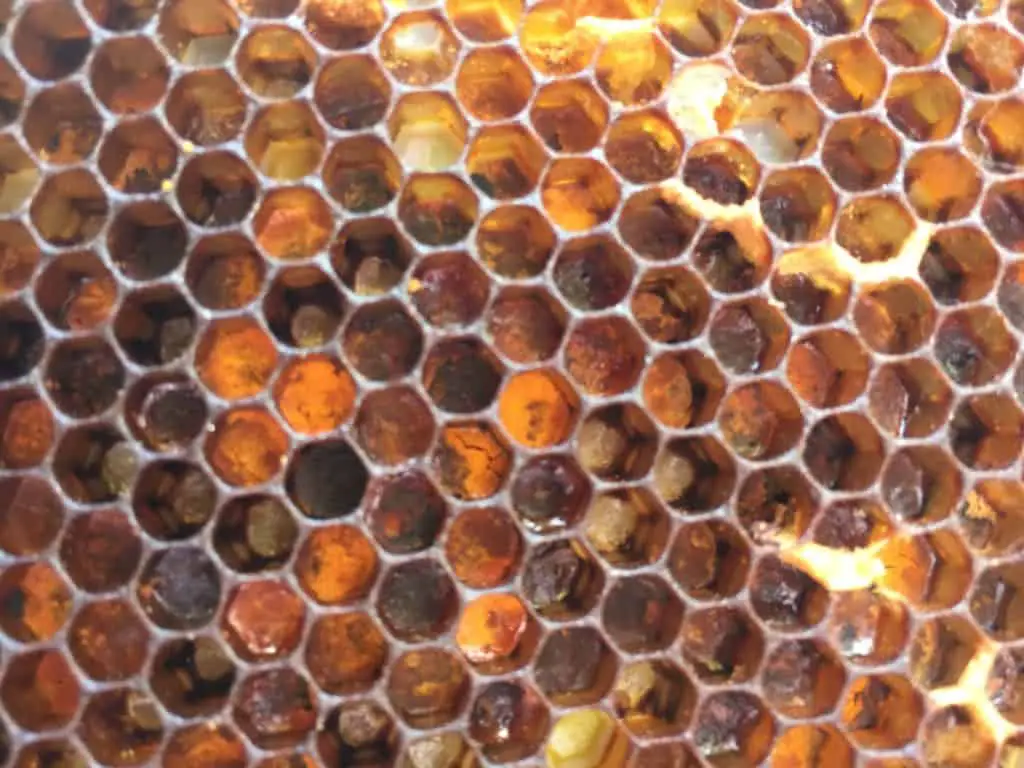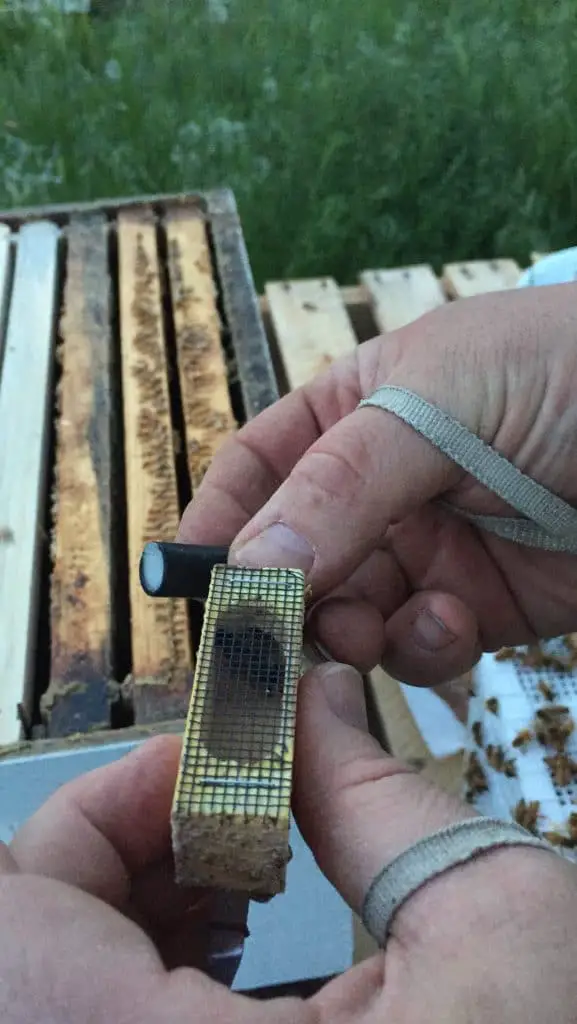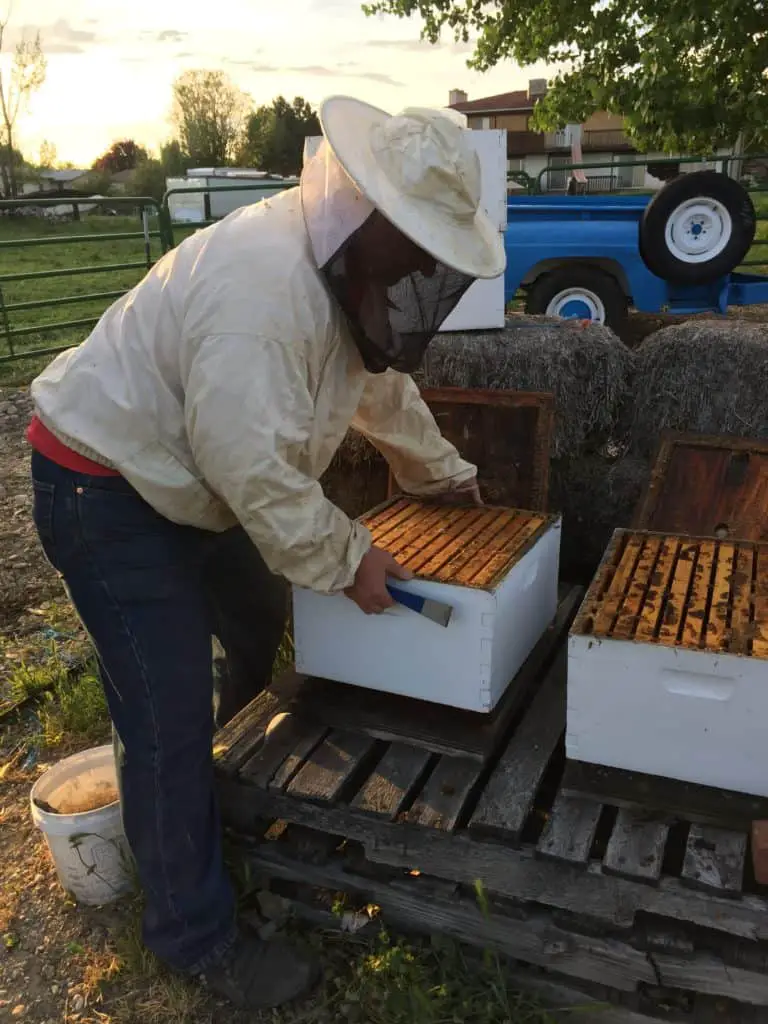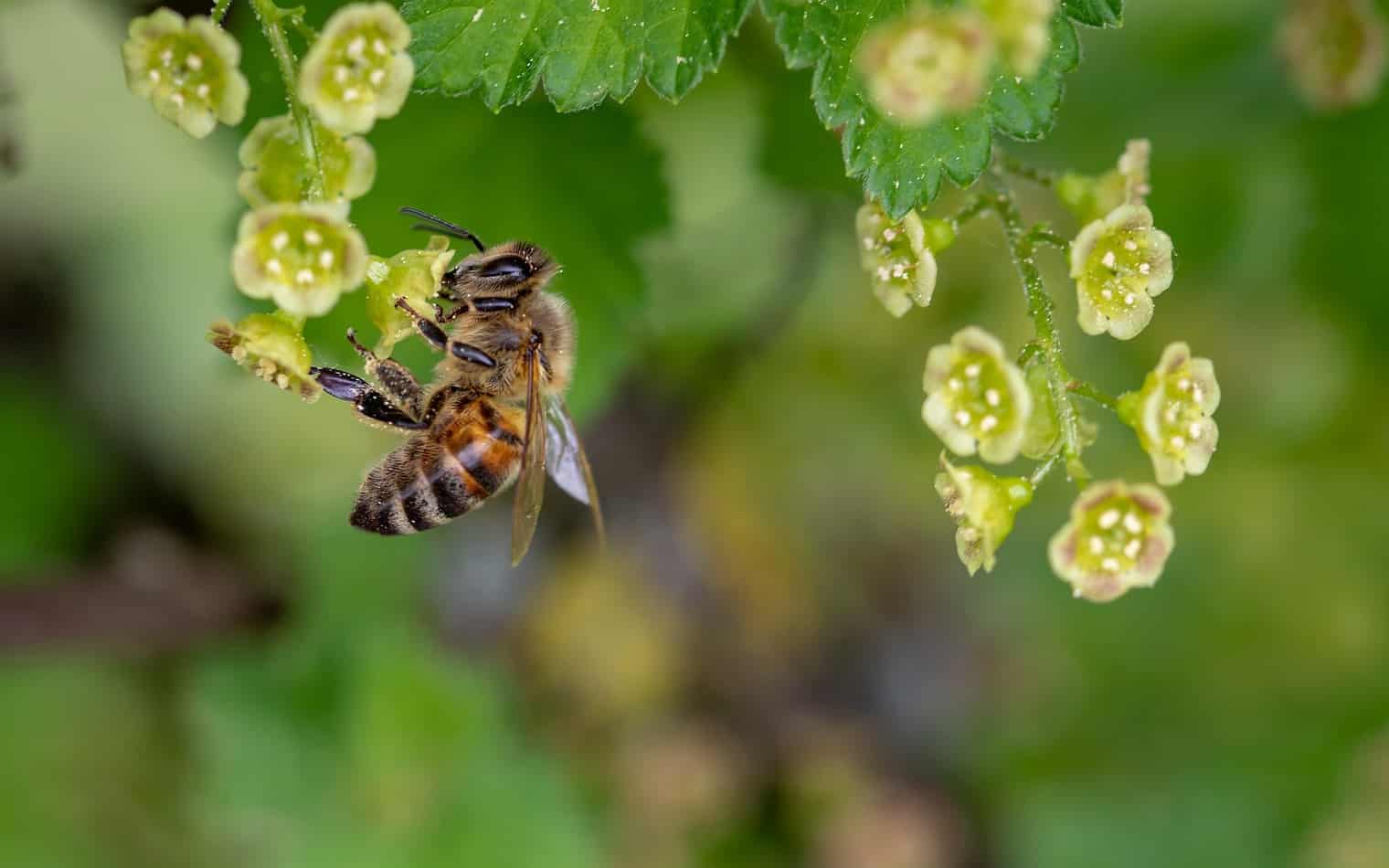We have been raising honeybees for a few years now and a question that a lot of people ask is, “How long does a honeybee live?”.
The easy answer is, “As long as it can!”. The more complicated answer is that there are 3 main types or castes of bees in a honeybee hive and each caste will live a different length of time. The three types of bees are the queen bee, the worker bee, and the drone bee.
Queen honeybees will live generally 2-3 years. Some have been recorded as living up to 5-7 years.
Worker honeybees will live 5-6 weeks in the spring and summer, and 5-6 months in the winter.
Drone honeybees will live on average 8 weeks.

Honeybee beginning, larva.
All honeybees begin as an egg. Each egg is laid in a cell in the hive. The eggs hatch into larva. This is the stage where all honeybee larva are given royal jelly as food. Royal jelly is super nutritious and is secreted by nurse bees.
The length of time and how much royal jelly the larva get depends on what type or caste of bee they are. The queen larva is fed more royal jelly for longer. Worker and drone bees are fed royal jelly for the first few days only.
The queen honeybee gets fed royal jelly throughout the larval stage. The queen will get a little added honey to the royal jelly at the end of the larval stage.
After a few days of royal jelly for food, the worker bees are then fed worker jelly. The worker jelly is sometimes known as brood food. Worker jelly is less nutritious than royal jelly and can be produced in larger quantities to feed the majority of the larva in the colony.
Drone bees are fed royal jelly to begin with like all the other larva. The drones are then fed a supped-up version of the worker jelly. The drone worker food will have extra pollen and honey added.
Honeybee pupal stage
The pupal stage is where bees transform from grub looking things into looking like bees. The bees will form the legs, wings, internal organs and fat cells. This is where they develop into the adult bees that will serve the colony.
The total time it takes to go from larva to pupae to adult again depends on what caste or type of bee.
The time it takes to mature to an adult bee:
- Queen honeybee-16 days.
- Worker honeybee- 21 days.
- Drone honeybee- 24 days.

Queen honeybee
The queen honeybee is the largest member of the honeybee colony. They are around 2 cm or just under an inch long. There is only one queen bee per colony. When you inspect a hive, you can detect a queen usually due to her size and how all the other bees are acting around her. Sometimes people get confused and think drone honeybees are the queen due to their size, but the queen is even larger than the drones.
The queen honeybee lives the longest in a colony. As stated above a queen usually lives 2-3 years. Sometimes the lifespan is cut short due to illness, predators, poor beekeeping, or mites. Another thing that a lot of beekeepers do is to requeen a hive and kill the old queen. But if a queen is left to live out her normal lifespan it would be 2-3 years. Some queens have lives up to 7 or 8 years, but this is super rare.
The queen honeybee will need to do her part, or she will get taken out and her lifespan will be shorter. A honeybee queen will lay 1,000-2,000 eggs a day in the hive. If the queen doesn’t keep up her duties and becomes old and weak the workers will raise a new queen giving her all the attention and food. The old queen will die, and the new queen will take over.
Worker honeybee
There are thousands of worker bees in a honeybee colony. The worker honeybee makes up the bulk of the colony and does the bulk of the work. Worker bees are female bees like the queen.
Worker bees will spend the first part of their life inside the hive. They have duties ranging from cleaning, feeding brood, nursing, cooling, and arranging the hive resources.
Worker bees live only 5-6 weeks during the production phase of the year. They basically wear themselves out. Working to death so to speak.
Winter worker honeybee
When winter comes the worker honeybee, is different than the summer worker bee. The composition of a winter worker has more fat cells and is larger through the abdomen. The winter worker lives a lot longer than the normal summer worker. Winter worker bees can live from 4-6 months.
The duties of the winter worker are a lot different than the summer worker. The primary purpose of the winter worker is to keep the queen alive and healthy. They do any and everything they can to do this. We have an article here explaining what happens in a beehive through the winter.
Drone honeybee
The drone honeybee is an interesting part of the hive. Drones are the male part of the colony. Drones are a bit larger than the worker honeybee but smaller than the queen. Drones have no stinging mechanism. The drones also have larger eyes on the tops of their heads.
Drone honeybees will leave the hive about 6 days after hatching into an adult honeybee. They will congregate in search of a queen. One queen will mate with up to 20 different drones to give her enough sperm to fertilize her eggs for the next few years. So there is a fighting chance for the drone to serve his purpose.
If a drone is successful in mating with a queen honeybee, he will die minutes or a few hours after. If the drone strikes out and is not successful in finding and mating with a queen, he will come back to the hive.
Without anything really to do drones will just get in the way and eat. Drones will try to stay as long as they can freeloading. Usually the efficiency of the hive will rule, and the drones will be kicked out. Once the drones get kicked out, they will have to fend for themselves. The drones will generally end up dead due to starvation or the cold.
The average lifespan of the drone is 8 weeks. This can vary if the hive is low on resources they will kill or kick out the drones and they live shorter than 8 weeks for sure. When winter comes the colony will kick out the drones as well, leaving the resources for the winter workers and queen to survive the winter.

Things that will shorten the lifespan of a honeybee
In a perfect world, honeybees will live for the maximum time that is expected. Queens living 3-7 years, worker bees 5-6 weeks, drones 8 weeks, winter workers 5-6 months. However, there are a lot of things that can happen that really shorten the lifespan of a honeybee.
Honey is well sought after by a lot of predators. Bears, racoons, mice, and other animals love honey and will do whatever they can to get it including tearing apart a hive to get it.
Other bees, wasps, and hornets will rob the honey from a hive and kill bees to get it. These robbers can decimate a colony’s stores quickly. Unless you inspect the hive frequently you may not even be aware of this. The hive will have honeybees, flying in and out looking normal. What will be happening is that a competing hive is flying in and robbing the honey leaving the original colony starving.
Poor beekeeping habits can shorten the lifespan of a honeybee. If a beekeeper takes too much honey the colony will starve. If a colony isn’t cared for it can become honey bound and will not have the room to grow and survive. Often if this happens the colony will swarm to find a new place to live with more room. These are just 2 of the many ways bad beekeeping can kill a honeybee.
The biggest problem that honeybee colonies face are disease and mites. Disease and mites seem to work hand in hand to weaken and destroy a colony. Some good beekeeping habits and care can aid in the fight against disease and mites. I have a few resources in our beekeeping section that might help with this.
Summary
In summary honeybees can live for quite a long time depending on their place in the colony. The type or caste of honeybee really determine the opportunity on who lives the longest. As it goes the queen bee lives the longest, and the drone bee that successfully mates lives the shortest.

